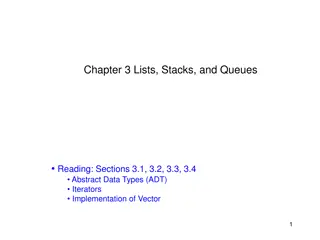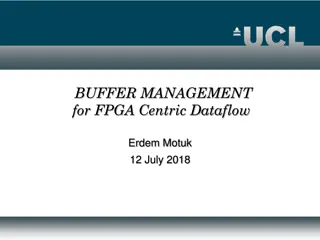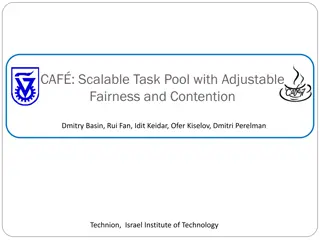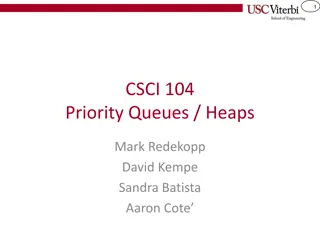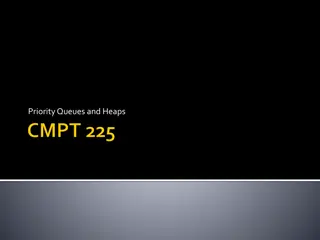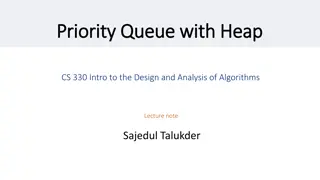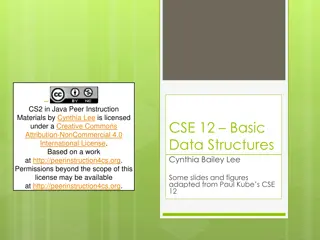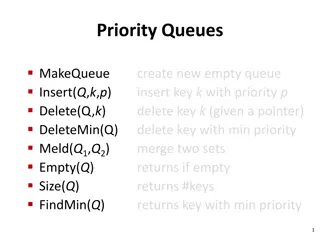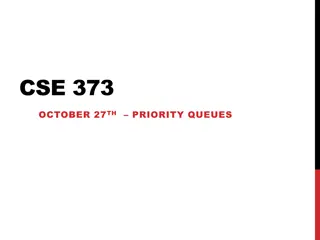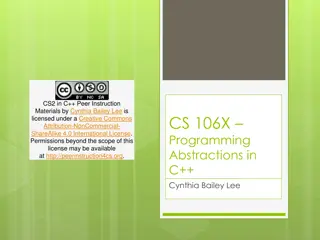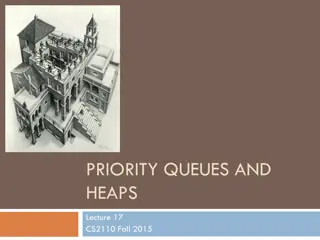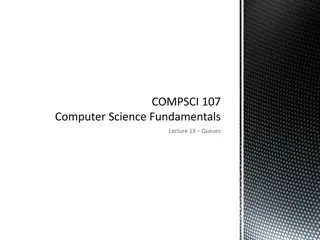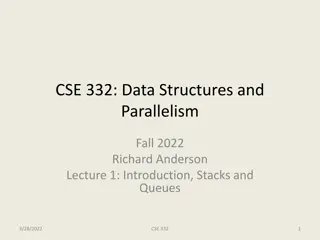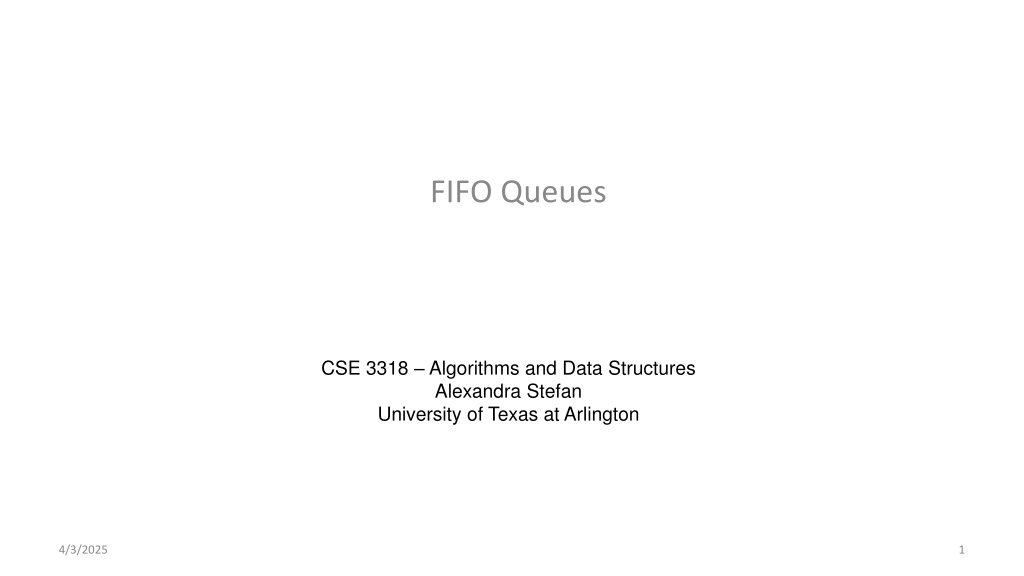
FIFO Queues in Algorithms and Data Structures
Learn about FIFO queues in CSE 3318 at the University of Texas at Arlington, including implementations using linked lists and arrays. Explore examples, operations, and reallocation issues. Discover how FIFO queues are used in program execution, resource allocation, search algorithms, and more.
Download Presentation

Please find below an Image/Link to download the presentation.
The content on the website is provided AS IS for your information and personal use only. It may not be sold, licensed, or shared on other websites without obtaining consent from the author. If you encounter any issues during the download, it is possible that the publisher has removed the file from their server.
You are allowed to download the files provided on this website for personal or commercial use, subject to the condition that they are used lawfully. All files are the property of their respective owners.
The content on the website is provided AS IS for your information and personal use only. It may not be sold, licensed, or shared on other websites without obtaining consent from the author.
E N D
Presentation Transcript
FIFO Queues CSE 3318 Algorithms and Data Structures Alexandra Stefan University of Texas at Arlington 4/3/2025 1
FIFO Queues First-in first-out (FIFO) queues. Examples of usage of FIFO queues: Program execution: Requests for access to memory, disk, network... Resource allocation: Forwarding network traffic in network switches and routers. Search algorithms. E.g. part of BFS in Graphs, level-order traversal for trees. (See later in the course) Main operations: put - inserts an item at the end of the queue. (add/offer/enqueue/insert) get - removes the item from the head of the queue. (remove/poll/dequeue) 2 implementations for FIFO queues: single linked list & array 2
Linked List Implementation for FIFO Queues A FIFO queue is essentially a list. put(&queue, item) inserts that item at the end of the list. - O(1) Assumption: the list data type contains a pointer to the last element. get(&queue) removes (and returns) the item at the beginning of the list. - O(1) See animation typedef struct node * nodePT; struct queue_list { nodePT head; nodePT tail; int size; }; my_queue (struct queue_list) 30cd 10bd head (nodePT) .... 3 1 7 18 30cd tail (nodePT) 10bd size (int) 9 3
Array-Based Queue: Example See animation struct queue_array { int capacity; int size; int head; // index OF first item int tail; // index AFTER last item int *items; }; put(15) put(20) get() put(30) put(7) get() put(12) get() get() Conventions: place where the new item will be added (tail). underline: first item in the queue (head). x put(x) * get() 4
Array Implementation for FIFO Queues bool put(Queue * Q, int val){ if ((Q==NULL)||(Q->size == Q->capacity-1)) {// full return false; } Q->size++; Q->items[Q->tail] = val; Q->tail = (Q->tail+1)%Q->capacity; return true; } struct queue_array { int capacity; int size; // index of first item int head; // index AFTER last item int tail; int *items; }; typedef struct queue_array Queue; bool get(Queue * Q, int* ret){ if ((Q==NULL) || (Q->size == 0)){ return false; } *ret = Q->items[Q->head]; Q->head = (Q->head+1)%Q->capacity; Q->size--; return true; } 25 5
Issues with reallocation Assume that if the queue is full and a put operation is called you will NOT refuse the insertion, instead you will reallocate the array to make a bigger queue. (Assume the initial max_size is 10) Q1. How do reallocate? a) +10 (an extra 10 spaces) b) *2 (double the space) Assume you allocate a queue of max size 10 at first. The user keeps inserting items until they put M items in the queue. (M can be a 1000000) For Q1 a) and b) above answer: - how many reallocations are needed - Time complexity of all the reallocations and data copying to put all M items in Q2. How do you reallocate memory and how do you copy ? Consider these options: - (Realloc) or (malloc with memcopy) - Malloc with copy one by one (e.g. newArr[i] = oldArr[i]) - Reinsert one by one 6
Array Implementation for FIFO Queues If for the put() operation, when the queue is full, we want to reallocate, how will we copy the data from the old array into the new one? We must do it in such a way that whatever sequence of operations follows, the data is processed in the correct order, in particular, it will be removed from the queue in the FIFO order. E.g. if we follow with: 100,*,*,*,*,* We should get the data in order: 20,30,7,100 struct queue_array { int capacity; int size; // index of first item int head; // index AFTER last item int tail; int * items; }; typedef struct queue_array Queue; 7 20 30 7 20 30 bad good 7

